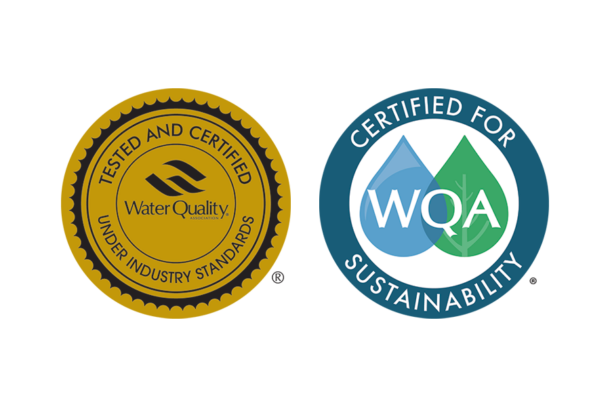Back in May, I attended the Emerging Water Technology Symposium in Scottsdale, Ariz. Some of the brightest minds in the industry met to discuss water, water efficiency, and what new technology can be used to help conserve this precious resource. On of the many topics that stood out was conversation regarding PFAS. What the heck is that, you ask? Well, not necessarily new, it could be considered today’s Flint/lead in piping. I recently caught up with one of those PFAS experts, Eric Yeggy, Director of Technical Affairs, Water Quality Association, who spoke back in the desert on the subject.
MH: For those unaware, what is PFAS?
YEGGY: Per- and polyfluoroalkyl substances, or PFAS, are a group of man-made chemicals that are used in many industries. They have unique chemical properties which make them ideal for use in non-stick coatings, water-resistant fabrics, fire-fighting foams, and many other products. People often refer to PFAS as “forever chemicals” because they do not break down naturally in the environment.

There are thousands of different types of PFAS in use. Some estimate that there are as many as 15,000 different PFAS in use, many of which are considered proprietary chemicals. The exact chemical structure of these proprietary chemicals is not disclosed, which makes it very difficult to test for these chemicals. We know the most about two specific PFAS, PFOA and PFOS, which were voluntarily phased out of production in the U.S. by 2015. We know that PFOA and PFOS have found their way into our food supplies and into our drinking water, and we know that there are serious health concerns associated with these chemicals. Unfortunately, we know the least about the many other PFAS currently in use, including the next-generation PFAS chemicals that the industry switched to when they phased out PFOA and PFOS.
MH: Why is it so important for our audience to know about this?
YEGGY: Once PFAS are released into the environment, they are going to persist until we remove them. Once they reach a water source, such as a stream, lake, or underground aquifer, they can travel many miles. This persistence and mobility is why they are showing up in our food and drinking water. Studies have shown that the majority of people tested for PFAS have detectable levels in their blood.
Ingestion of PFAS through food or drinking water can lead to serious health issues including: reproductive effects such as decreased fertility; developmental effects in children such as low birth weight; behavioral changes in children; interference with hormones; interference with the body’s immune system; decreased effectiveness of vaccines; increased risk of some cancers including prostate, kidney and testicular cancers; increased cholesterol levels and obesity.
MH: How can one be exposed to PFAS, or is it all around us?
YEGGY: PFAS are all around us. We all use products on a daily basis that were made with PFAS. Beyond our food and water, common examples include cookware, carpet; upholstery, clothing, makeup, shampoo, dentil floss, paper straws, paper towels, product packaging, and even food packaging.
MH: Are children more susceptible to it?
YEGGY: It is still unknown whether children are more sensitive to all of the harmful effects of PFAS, but obviously since they are still developing, they are more susceptible to any chemical like PFAS that can cause detrimental development effects. And because of their behaviors, children might be exposed more than adults. Children play on the floor where they may be more exposed to microparticles of carpet that contain PFAS. Very young children have a habit of putting things in their mouths. Children drink more water, eat more food, and breathe more air per pound of body weight than adults do. All of these factors potentially increase the exposure risk of children.
MH: I feel like PFAS has come up lately more in conversations but I realize that it has been a problem for some time, and it has become the “new lead in drinking water crisis.” Am I oversimplifying this?
YEGGY: No, I think you are correct about that. PFAS have been a problem for many decades. The EPA’s recent actions to regulate PFAS, especially in our drinking water, have brought new media attention to an old problem that the general public wasn’t previously knowledgeable of.
MH: Is there anything that can be done to lower PFAS levels or limit it?
YEGGY: Because PFAS are so persistent in the environment, we will need to get better at preventing that from happening in the first place. Right now we are continuously recycling PFAS back into the environment (see attached graphic). Much of it passes right through wastewater treatment plants, ending up back in the surface water. Some of it is captured in the wastewater treatment sludge, which is then land-applied as fertilizer. The PFAS leaches out of the sludge and is either carried off by stormwater to a nearby stream, or percolates down through the soil into the groundwater. If PFAS-laden waste ends up in a  landfill, you will have PFAS in the landfill leachate solution that is sent to the local wastewater treatment plant, which simply starts the cycle over again. You may also end up with some landfill leachate solution containing PFAS escaping and percolating down into the groundwater. On top of all this continued recycling of PFAS back into the environment, you also have the industry constantly creating more PFAS, which eventually ends up in this cycle.
landfill, you will have PFAS in the landfill leachate solution that is sent to the local wastewater treatment plant, which simply starts the cycle over again. You may also end up with some landfill leachate solution containing PFAS escaping and percolating down into the groundwater. On top of all this continued recycling of PFAS back into the environment, you also have the industry constantly creating more PFAS, which eventually ends up in this cycle.
The good news for consumers is that companies are becoming more sensitive to these concerns and looking for alternatives to PFAS. And there are very simple over-the-counter treatment devices that consumers can use to remove PFAS from their drinking water. For the DIY consumer, there are Filters and Reverse Osmosis systems certified to remove PFAS. Look for a third-party certified seal on the product packaging that indicates the product has been certified to reduce the concentration of PFAS. The three most common third-party seals in the U.S. market are the IAPMO seal, the NSF seal and the WQA seal. I will send you a slide that shows their seals and websites.
Consumers who prefer to have a trained water treatment professional take care of this can use our website to find a qualified water treatment professional in their area who has agreed to abide by WQA’s code of ethics:
Or better yet they can use our more advanced search engine to find a Certified water treatment professional in their area, who has also agreed to abide by WQA’s code of ethics:
https://find.wqa.org/programs-services/resources/find-providers/find-certified-professionals
MH: Where can we find more information on PFAS?
YEGGY: Consumers who have questions about PFAS in drinking water can reach out to WQA (wqa@wqa.org or 630-505-0160).
WQA also has a PFAS guide for the general public:
https://wqa.org/wp-content/uploads/2024/04/PFAS-Consumer.pdf
The EPA also has a good website on PFAS which contains general information, and a link where people can submit questions to the EPA:
https://www.epa.gov/pfas/our-current-understanding-human-health-and-environmental-risks-pfas



